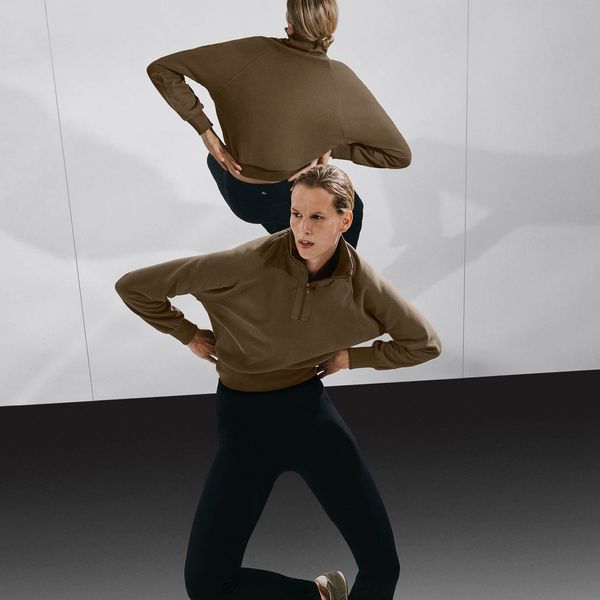
In Eye Diet, Sydney Gore breaks down the buzziest design and decor trends that are a visual feast.
Food is the ultimate source, especially when you’re starved for inspiration. While food influencing design is not necessarily a new phenomenon, the influx of food trends went into complete overdrive during the pandemic. It started with mushrooms popping up everywhere, then moved on to bread lamps and butter sculptures. After putting fake cakes on our walls, we welcomed vegetables back to the center of the table in the form of candles and ceramics.
Now that we’re back in the full swing of dinner parties (with themes and dress codes), dressing a table to the nines is the new standard for post-pandemic life. The design world has quite literally been feeding into this curious fixation with corn stools, jelly lighters, and accent chairs inspired by doughnuts, fortune cookies, and cauliflower. “We forget that all of these things in design are always in conversation with each other—what’s happening in restaurants somehow gets back to fashion and the home,” says Shannon Maldonado, founder and creative director of YOWIE. “Especially right now in this economy, elevating food in this way is a luxury.”
So, even though we’re currently in the process of recovering from overconsumption by purging everything in sight, why is everything within the cultural zeitgeist connected to food?
The foodification of color
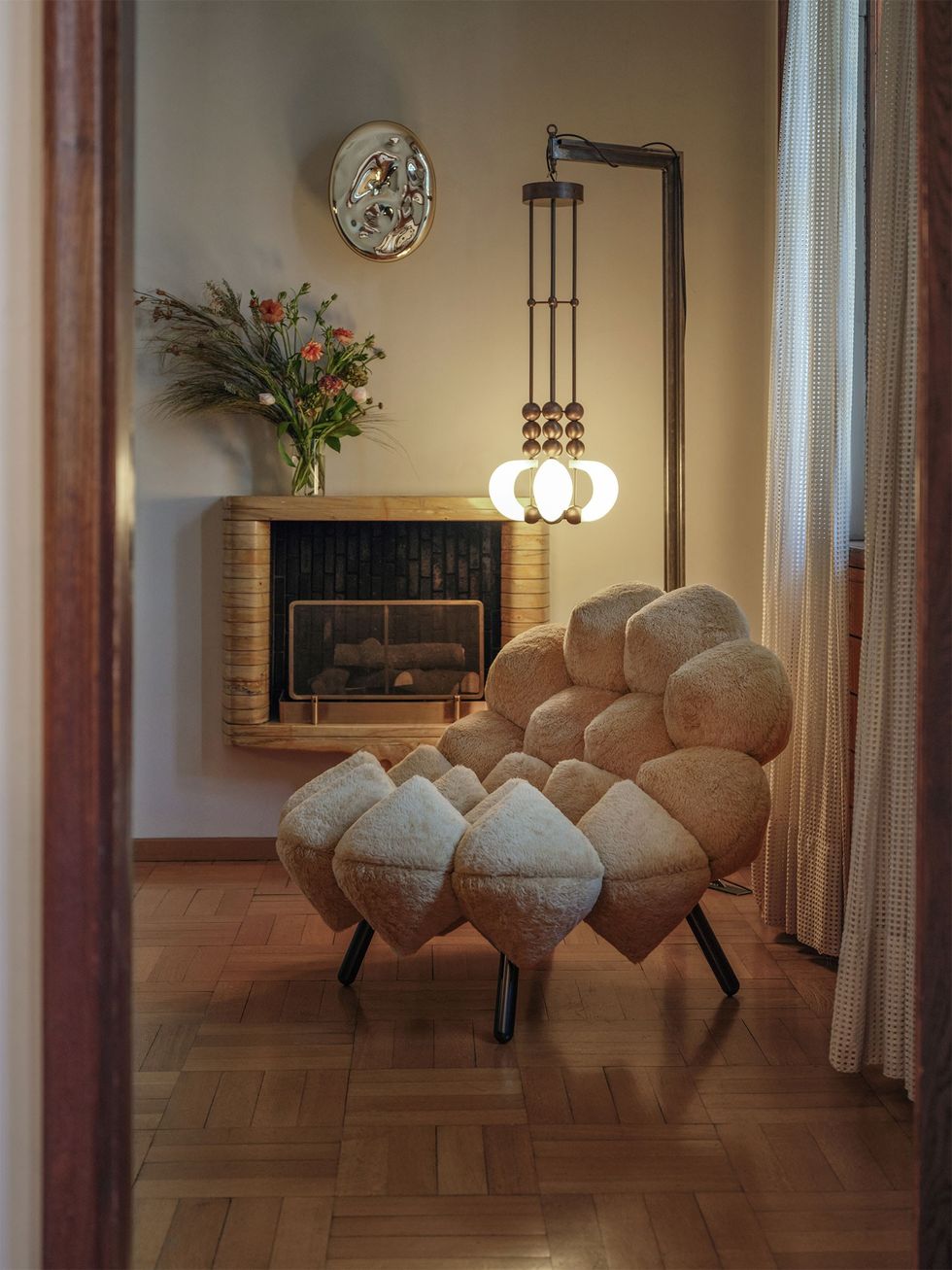
Neige Thebault
From butter yellow and tomato red to pistachio green and mocha brown, people can’t seem to get enough of food-themed colors. (I’ve always described the color palette of my apartment as neapolitan ice cream.) According to Laurie Pressman, VP of Pantone Color Institute, food-based shades immediately conjure a very specific feeling. “The emotional component of a color name is extremely important,” she insists. “Very often we name colors after food because of its relatability and its ability to enhance appeal. The more senses you can bring into a color name, the greater the resonance, connection, and impact it will have.”
Color is an easily accessible entry into the design space, so when it’s applied to food it becomes digestible to anyone familiar with the association. Pressman notes how “colors with a food name invites a feeling of deliciousness and helps foster a deeper connection because it brings in sight, smell, and taste.” Mocha Mousse was chosen as Pantone’s Color of the Year for 2025 because of its sensorial richness—the hue embodies “thoughtful indulgence, harmonious comfort, and feelings of contentment.”
“From a brand and product standpoint, your goal is to increase engagement,” Pressman explains. “Think how differently you may react to a color that is called brown vs. one that is referred to as 'chocolate fondant.' The first does not leave much of an impression while the latter may make your mouth water which in turn positively influences perception and could help inspire a purchase.”
For Woldy Reyes, author of In the Kusina, food plays into the bigger picture of a color story. “People can sort of visualize or taste color,” he says. “Do you actually want to taste those colors? Do you want it to live in your room? Will you be satiated in being in that room with that color?”
The New York-based chef also makes a strong case for why following the colors of the season should be applied to food. “Spring represents green, so I’m leaning into asparagus, super snap peas, and ramps,” he explains. “For the next event that I’m doing in a couple of weeks, I presented the proposal as ‘My color commentary for the grazing station is abundance and green and fresh.’”
Can you imagine drenching a room in fava bean green?
The ultimate taste test
In many ways, the kitchen is another stage for people to perform. Maybe you can’t afford a Le Creuset dutch oven, but what about AD100 designer Brigette Romanek’s set from Our Place? If you don’t have the latest appliances and gadgets sharing space on your counter, do you even know how to cook? While you’ll probably never go full glam like Nara Smith, that doesn’t mean there aren’t other ways to fake being the host with the most. (A little less labor, a lot more entertaining!)
Maldonado believes that food has become a new barometer of culture within the social media landscape. “We want to be the first person that’s eating at this butter-colored restaurant in New York or whatever it is," she says. “You wouldn’t think something that’s trending at a restaurant would then be printed in a home decor piece, but everything is shared in the same way. Even if people think they’re doing different things, all these cores are related to this monoculture that’s happening.”
2019 is considered the turning point for food trends, when DTC brands like Fishwife and Graza ushered in a new era of pantry staples designed to elevate the dining experience. This then opened the floodgates to a wave of “shoppy shops” like Big Night and Wine + Eggs, hitting us with a curated selection of aesthetically pleasing products that were unapologetically millennial-coded. “The same way we would all buy wine based on the labels, the food packaging was becoming that,” Maldonado explains. “These things are always a trickle down effect… [Food] is a very approachable trend that everyone knows. Even if they’re not a food person, at least they know what looks like good food.”
Set the table, we’re eating the rich!
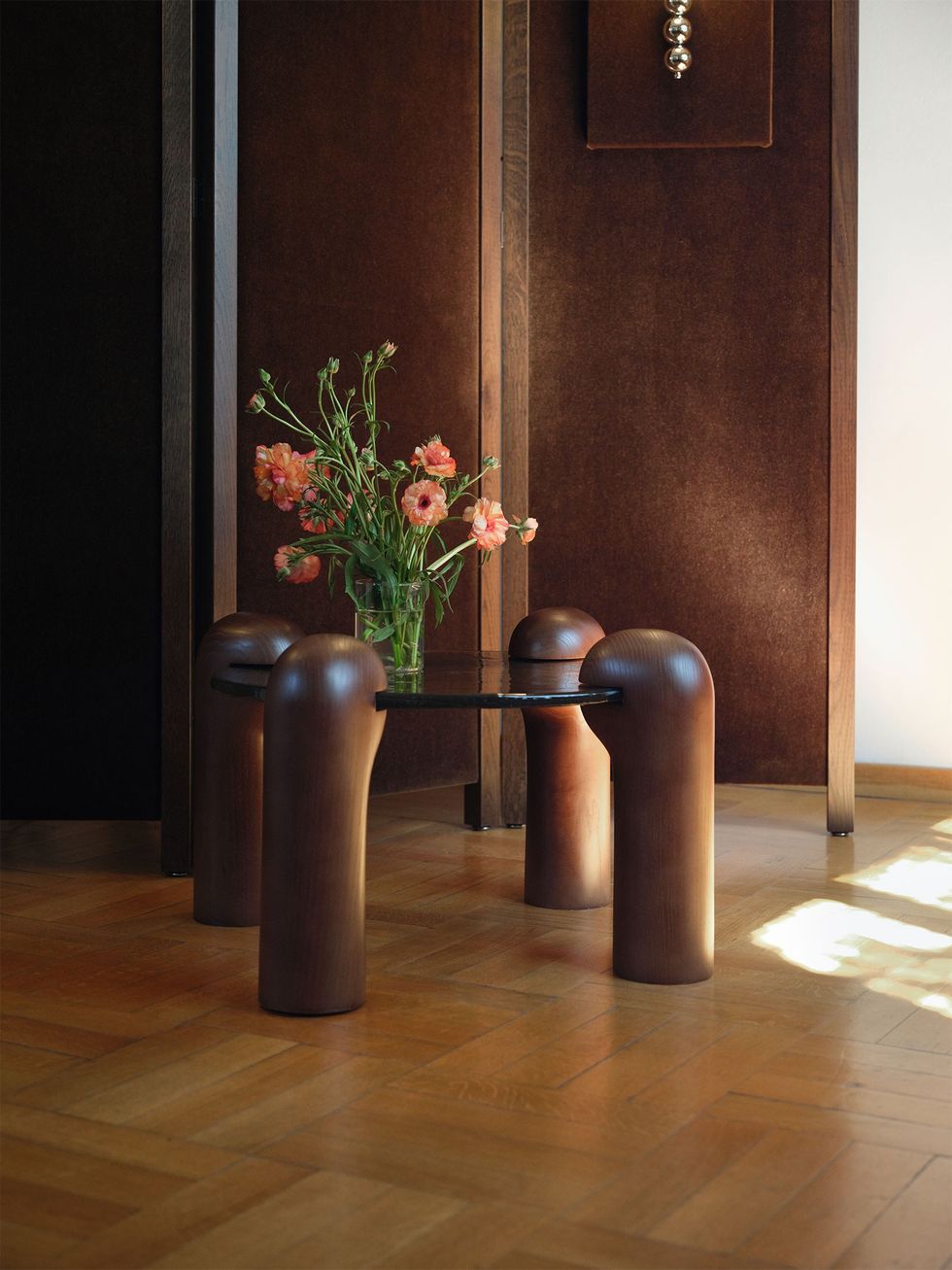
Neige Thebault
Throughout the pandemic, all eyes were on the table. We weren’t just fixated on the food that appeared on everyone else’s plates, but the tablewares it was being served on. Pressman emphasizes that during this stressful period in our lives, food became “one of the true sources of pleasurable relaxation and respite we could comfortably experience within the isolation of our homes” through the lens of social media.
In 2020, Laila and Nadia Gohar capitalized on the gap in tableware when they launched Gohar World. In addition to designing original products like shirt tablecloths, bottle aprons, and chicken foot pearl necklaces, the brand sources vintage items like $148 toast racks and $348 butter curlers. Many of these accessories are featured at the extravagant edible experiences that Laila creates for high end clients like Hermes, Marimekko, and Sothebys. “She takes specific food items that are a little bit obscure and applies it in ways where it could be presented in a chicer way,” Reyes notes. “Finding beauty in the unconventional, like the shape of an eggshell or a crack, I appreciate that.”
Today’s buzziest food artists are rewriting culinary narratives by mixing the high with the low. For example, “serving a chicken nugget on a multi-tier silver platter” alongside a dish of caviar is one of the trendy pairings that Reyes has noticed lately while attending parties, events, and other social functions. “It’s rooted in nostalgia, but then presented in a new way when you’re taking something that’s so common and trying to elevate it,” he adds.
Ananas Ananas is another food-art studio that has been at the forefront of showcasing food as design through unexpected colors, textures, and shapes. Established by Verónica González and Elena Petrossian in 2019, the duo has evolved from making edible installations for multi-sensory dining experiences to creating experimental objects featured at exhibitions across the globe.
As a chef with a background in merchandising, Reyes is constantly considering the presentation of his food and how people will engage with it. “I know how I want to present my food and I don’t want it to be trendy,” he explains. “I want it to be timeless, but I push it forward where there is a conversation to be had that is rooted in a specific culture to me.” Whether Reyes is serving traditional Filipino dishes on stacks of bamboo steamers or silver trays from Cristofle, he leads with an intentional approach.
“I’m thinking about a lot of different things; the flavor, the color, the texture, and the presentation and how it tells a story,” he says. “Eventually when people see it, they interpret it into their own lens—either through taste or sight.”
Enter: fridgescaping
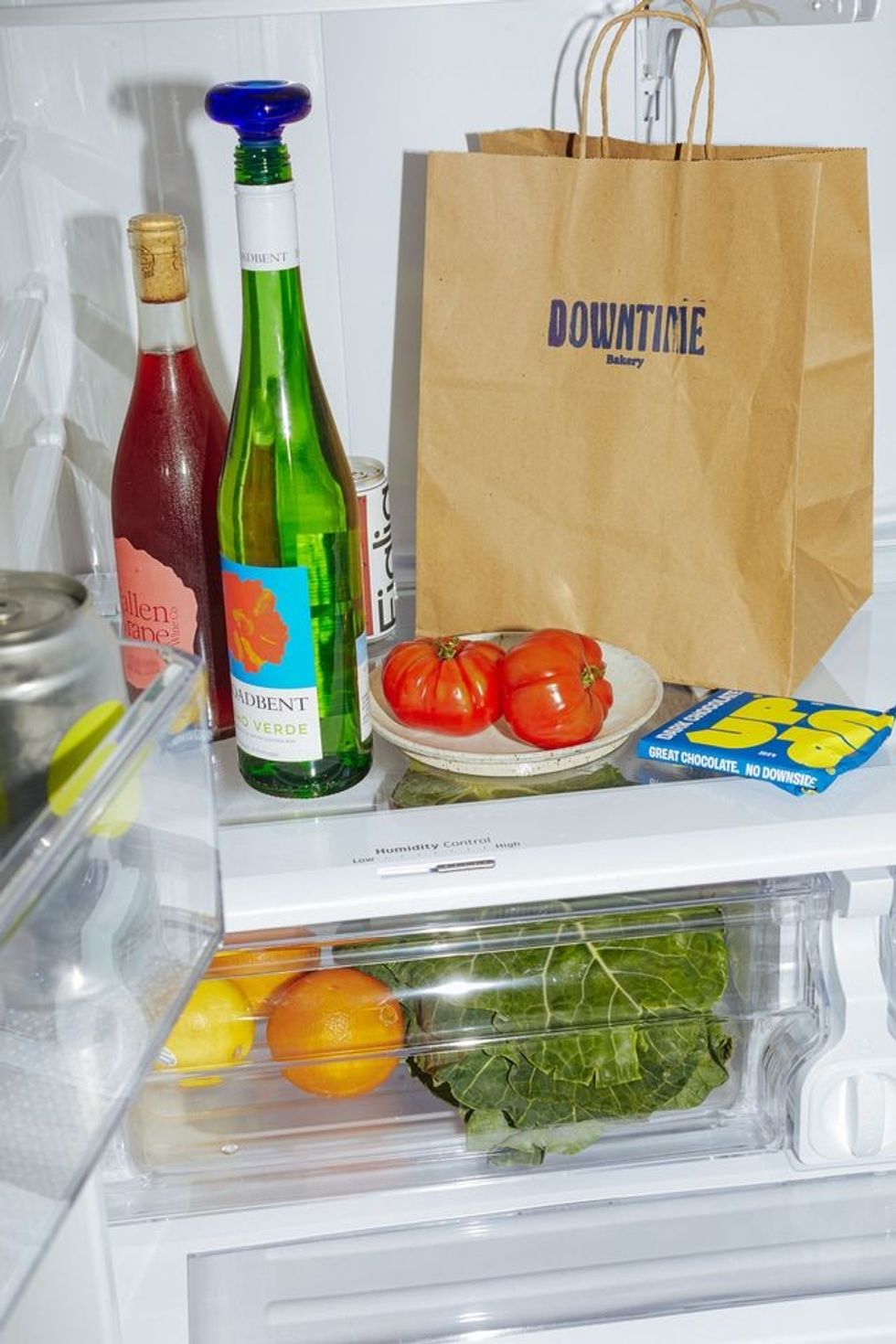
Yowie
Tablescaping is not enough—now we have to style our refrigerators too (the interior, not the exterior.) Back when MTV Cribs was still on the air, the highlight of every episode was always the refrigerator reveal. At the time, there were no aesthetics involved; the thrill was discovering what celebrities had stocked on their shelves. My personal favorite was Kelly Rowland because the emptiness really resonated with me and my “boy fridge” lifestyle, but on a good day I’m channeling Naomi Campbell with the hydration station.
Last year, “fridgescaping”—a call for styling the inside of your refrigerator with twinkly lights, framed photos, flowers, glass jars, and other decorative objects—went viral on TikTok. Unsurprisingly, the trend sparked some heated discourse across the Internet, but evidently what’s the harm if it makes someone happy? “The peek inside the fridge shot is fairly timeless and I still think there’s ways to do it that are fun,” Maldonado says. “Fridgescaping is a completely natural progression of shelfies. We went from the bathroom shelf to the bookshelf to the fridge, it totally makes sense.”
While Pressman sees this viral trend as a fad, she believes that the organizational aspect of “fridgescaping” will endure because it “makes it easier to locate the food you are looking for and potentially decreases waste.” (As for the curation of it all, she doesn’t think that’s going to last.) Reyes won’t be participating, but has nothing against the refrigerator as a creative medium. “Food as a vehicle for someone else’s creative outlet, either in fashion or design, is quite interesting to see,” he says. “It’s this sense of romanticizing, I feel like that’s great. Is it practical? No. But if you want to get more people engaged on their social media, perhaps.”
Separation of church and plate
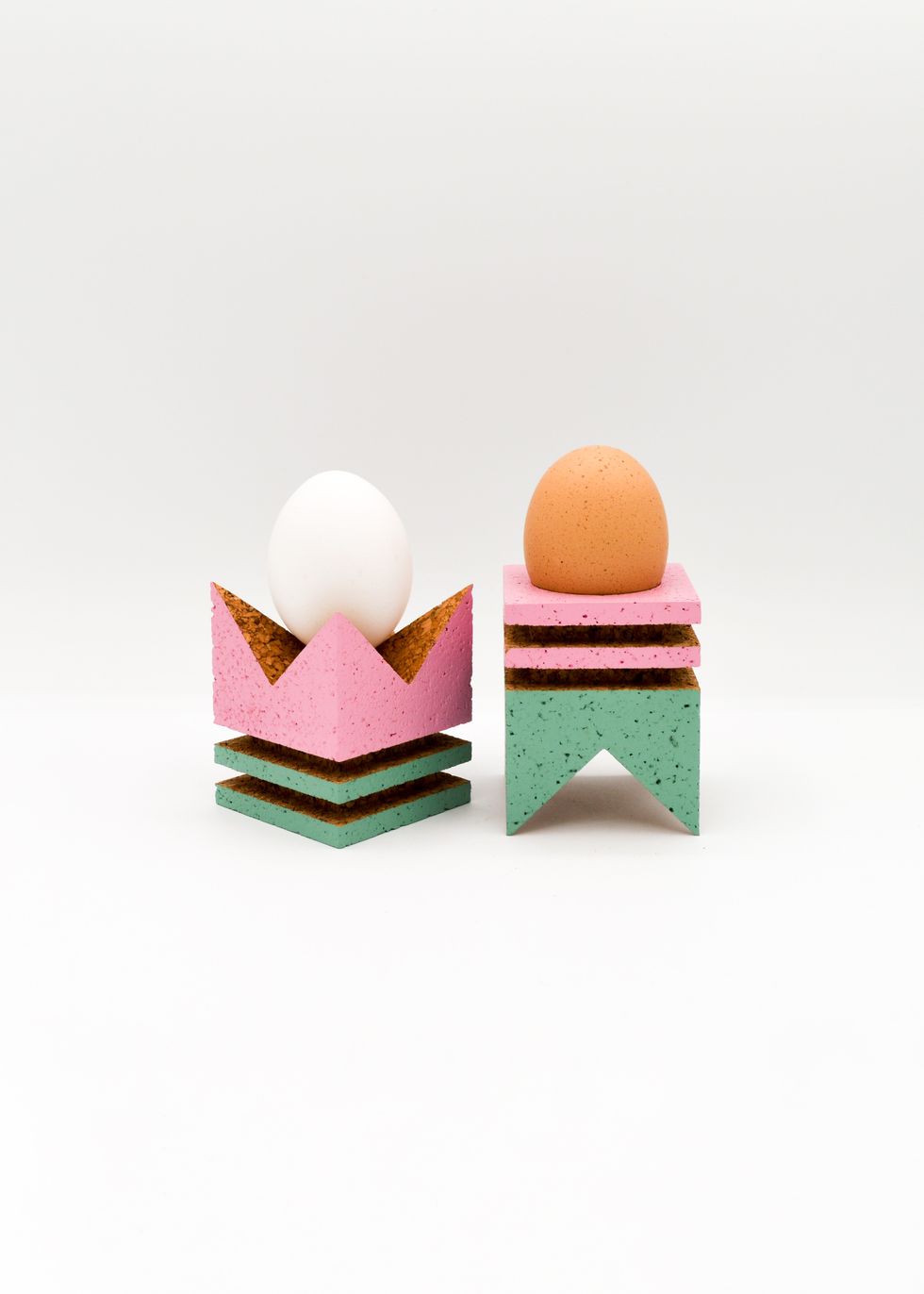
Egg Cup Show
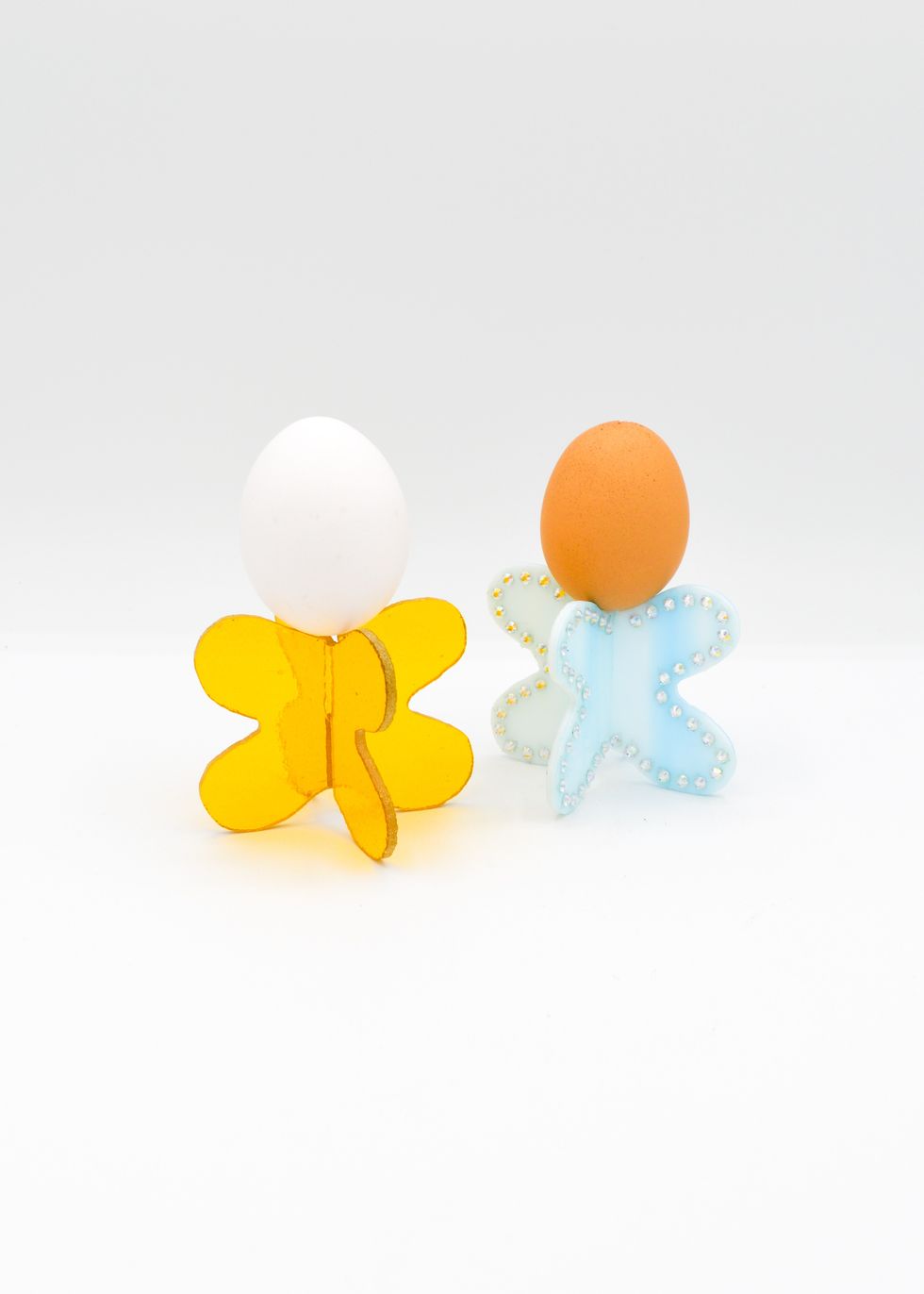
Egg Cup Show
Before America’s national egg shortage that caused prices to soar to $6-$8/dozen, the egg cup experienced a comeback. Last year, YOWIE even hosted an inaugural group exhibition that showcased the dish as an inspiration for artistic expression. (I should also mention Gohar World’s egg chandelier.) Culinary artists like Imogen Kwok have also introduced us to new ways to zhuzh up the shells with rhinestones, sterling silver, and rice.
In the midst of a food security crisis where the MAHA mentality continues to plague the nation, many of us crave the simple comforts associated with an old-fashioned home cooked meal. At the end of the day, the table has always served as a mutual place that brings people together. Pressman views the influence of food in design as a creative way to “elevate and enhance our everyday and experience the taste of different cultures.”
“Food brings us comfort and joy,” she continues. “It provides sustenance to the soul. We connect food to pleasure and relaxation, to the celebration or excitement of the rituals of entertaining, to socializing with others, the happiness and contentment of sharing a meal with friends or family. Or even the quietude of a meal with oneself.”

